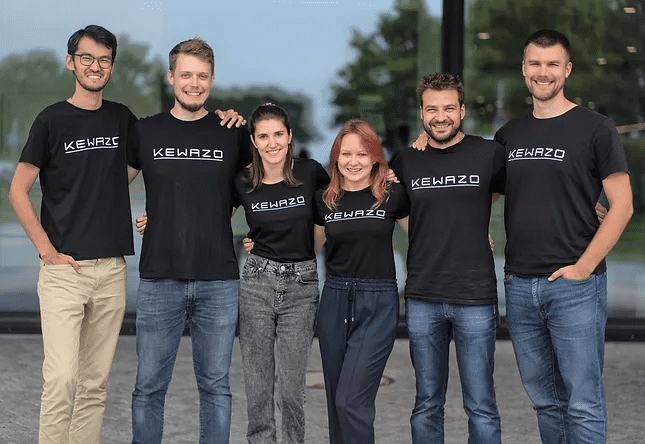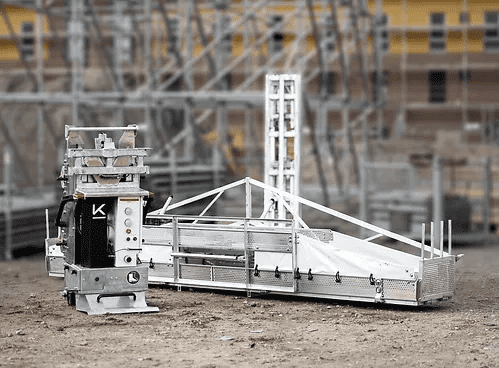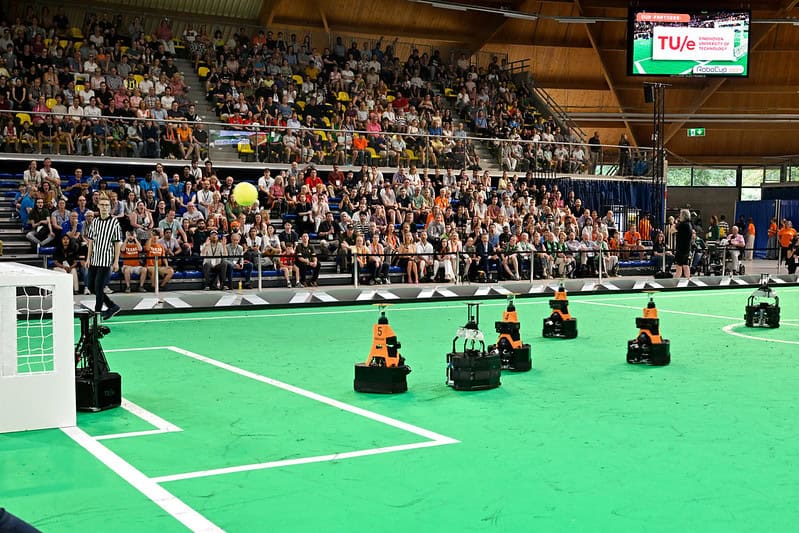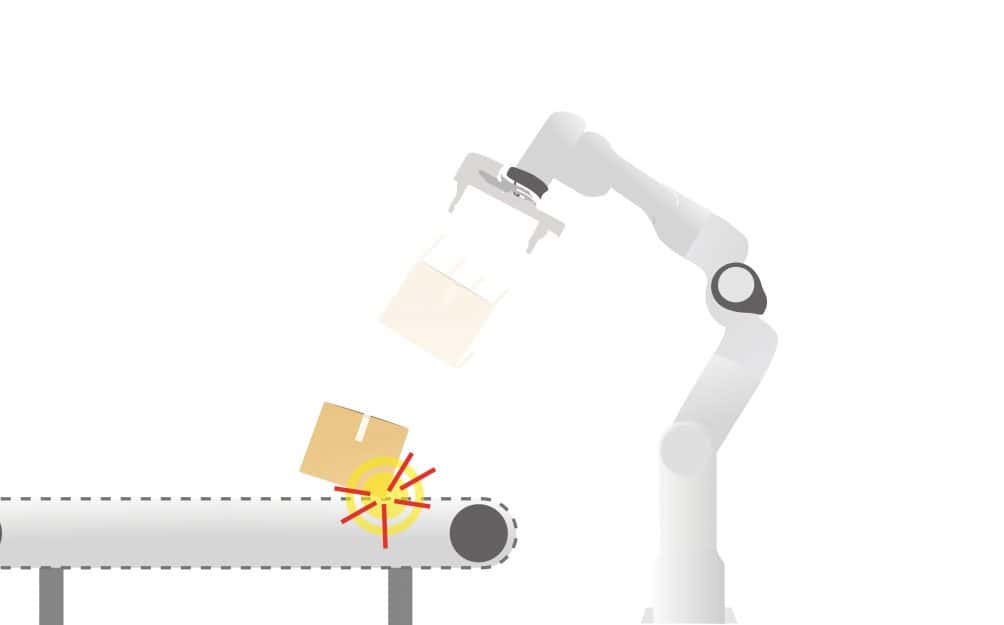
About Kewazo
- Founders: Alimzhan Rakhmatulin, Sebastian Weitzel, Eirini Psallida, Ekaterina Grib, Leonidas Pozikidis, Artem Kuchukov.
- Founded in: 2018
- Employees: 38 - will hire 15 more this year
- Money raised: $20 million
- Ultimate goal: Solving one of the biggest problems in the construction industry globally: the labor shortage.
To erect scaffolding on a construction site, tonnes of materials have to be lifted off the ground. This means that many workers are busy moving these materials, often using risky and exhausting methods. This work makes them prone to injury and could also be done in more efficient ways. What’s more, the construction sector is struggling with a labor shortage.
Kewazo created an intelligent lifting robot that picks up materials and brings them to where they are needed. Sebastian Weitzel is one of the company’s founders and spoke to Innovation Origins in this instalment of the Start-up of the Day series.
What does Kewazo do?
“We are providing an automated robot that lifts construction materials vertically. The robot works together with humans in this task. It is easy to carry, and it’s also battery-powered. The focus is on helping scaffolders hoist up tonnes of construction materials.”
How did you come up with this idea?
“At the end of my studies, I joined a prototyping course, where I met all the other Kewazo founders. There, we developed the first prototype of the solution we now have today. Using robotics in construction intrigued me because it made sense to use this technology as a way to make the job easier and more productive.”

How does the robot setup work?
“To start using the robot, a track is attached to the scaffold that is already in place. This is the area where the robot will move. Then, you can attach a transportation platform to the robot, which materials can be loaded onto. The robot is operated via wireless controllers. Once it reaches the required floor, the basket is then turned towards the inner area of the scaffold, so that workers can pick up the materials behind the safety guardrail, without having to lean out of the scaffold.
The robot quickly moves small amounts of material, and a loop is established where scaffolders always have materials to keep on building the structure. While this is going on, we send data to our servers, so project managers can keep track of the developments through this information.”
So, the robot knows when to stop and let workers unload the basket?
“That’s right. We can measure how far it has to go thanks to the motors and the technology inside of the robot, which makes it possible to control how far it has to move and consequently also program it. In addition, workers can manually adjust the robot’s movements through the remote control.”

What other industries can it be used in?
“The first robot we have ever sold was to a scaffolding company active in a large shipyard. I spent a month there myself. In shipyards, steel blocks are welded together, and scaffolding is assembled around these. Refineries and chemical plants are actually the environments where scaffolding is used the most. In those settings, huge equipment is used, often 20 meters in height or even taller, that have platforms built all around. Given the strict safety regulations that apply on those premises, our innovation can be of great benefit.”
How can you digitalize this industry further?
“We are thinking of expanding our range of digital products. Specifically, artificial intelligence and machine learning can predict how construction sites develop and what the level of productivity is. Yet, the nature of our projects is basically about developing a lot of hardware, and we may develop more robots down the line.”
Besides funding, what was the main challenge you stumbled on along the way?
“Being able to design a product that is market fit. In other words, making sure that it is used for an intended purpose that value is added. At the same time, considering aspects such as pricing versus the value and the construction market, which is by nature a conservative one.”
Why do you say that?
“Every construction site poses different challenges, stemming from the location, the weather, and the surroundings. Construction companies compete by price and by speed. So there is not much time to think about innovation in the workplace. Managers in the scaffolding and construction business tend to be preoccupied with operational problems, rather than on innovation in the workplace.”
What is next for Kewazo?
“Last summer, we started our expansion to the North American market. In the meantime, we will get in contact with prospective customers and keep working with the customers we already have. At the same time, we will keep developing digital solutions.”








